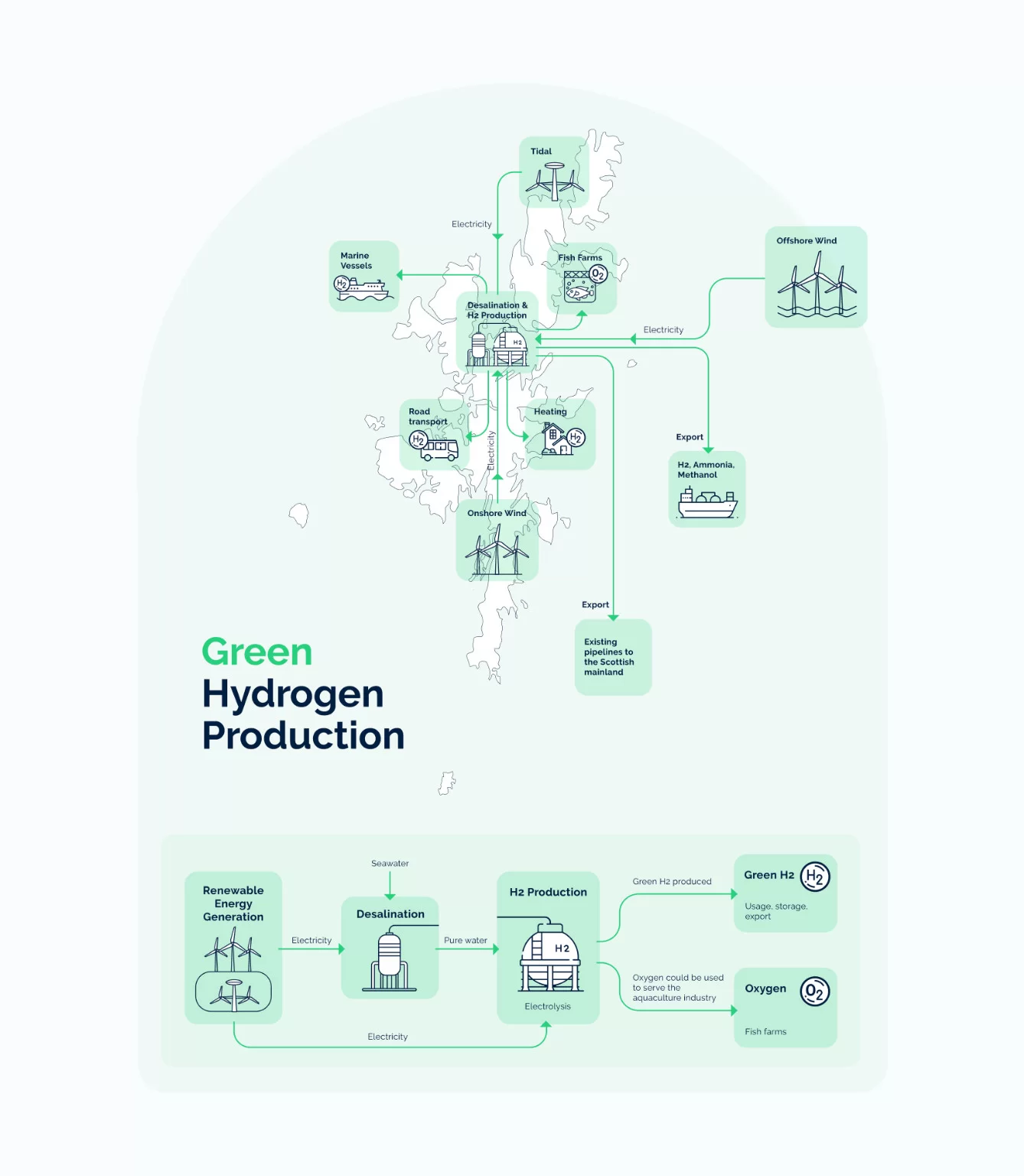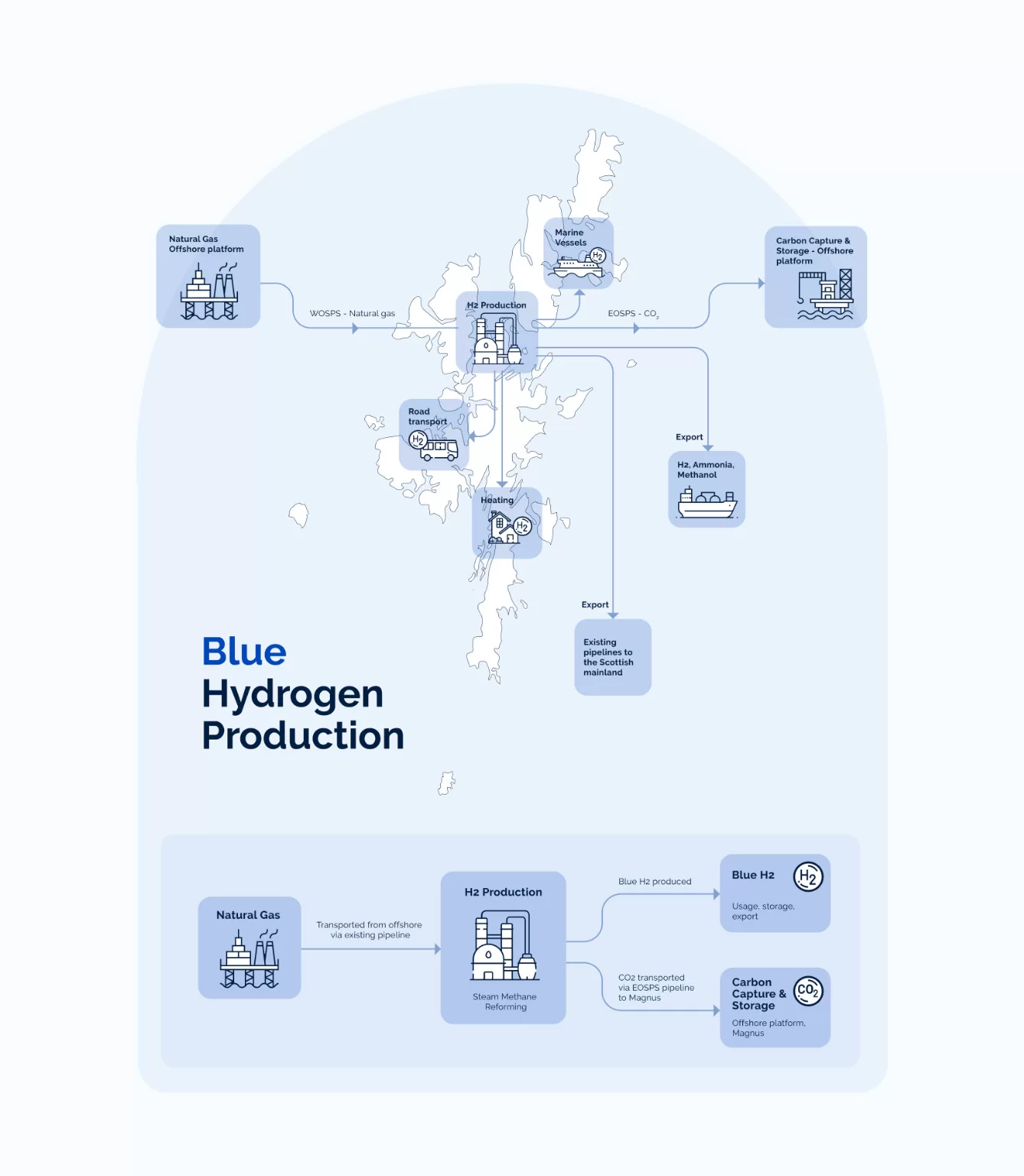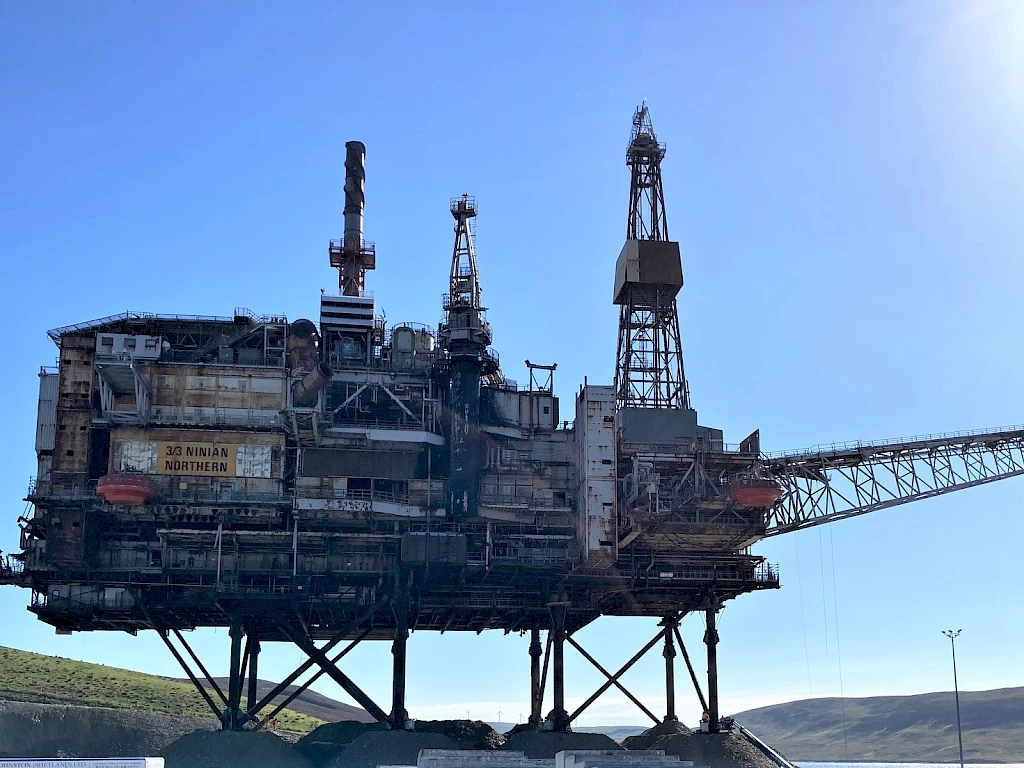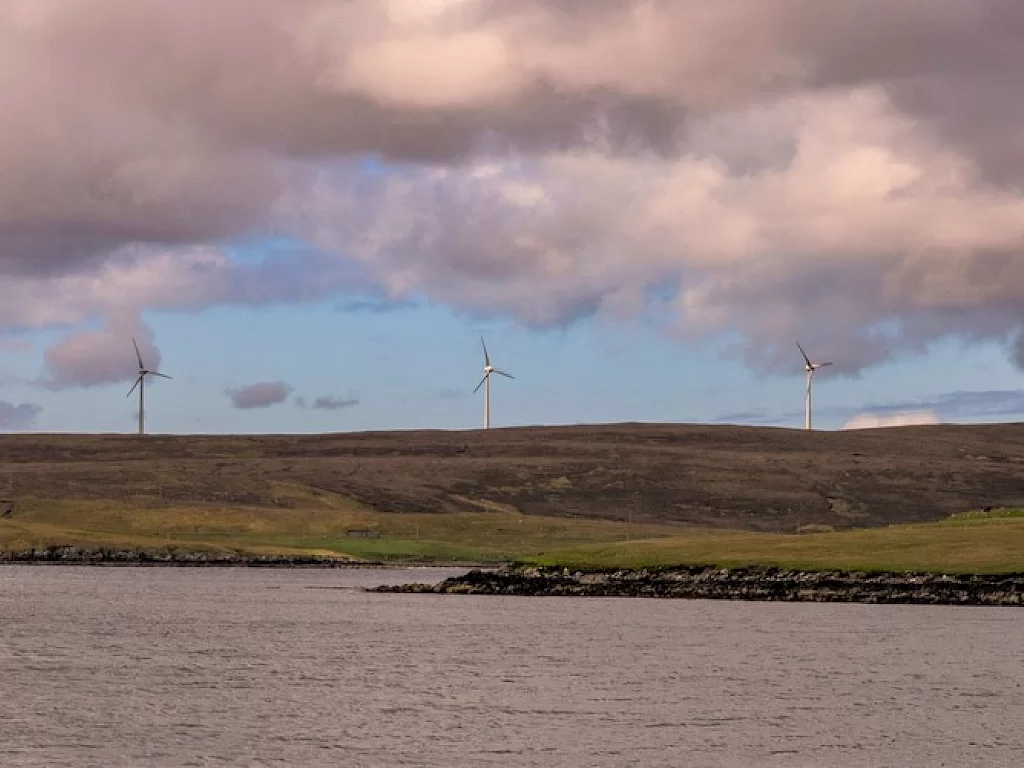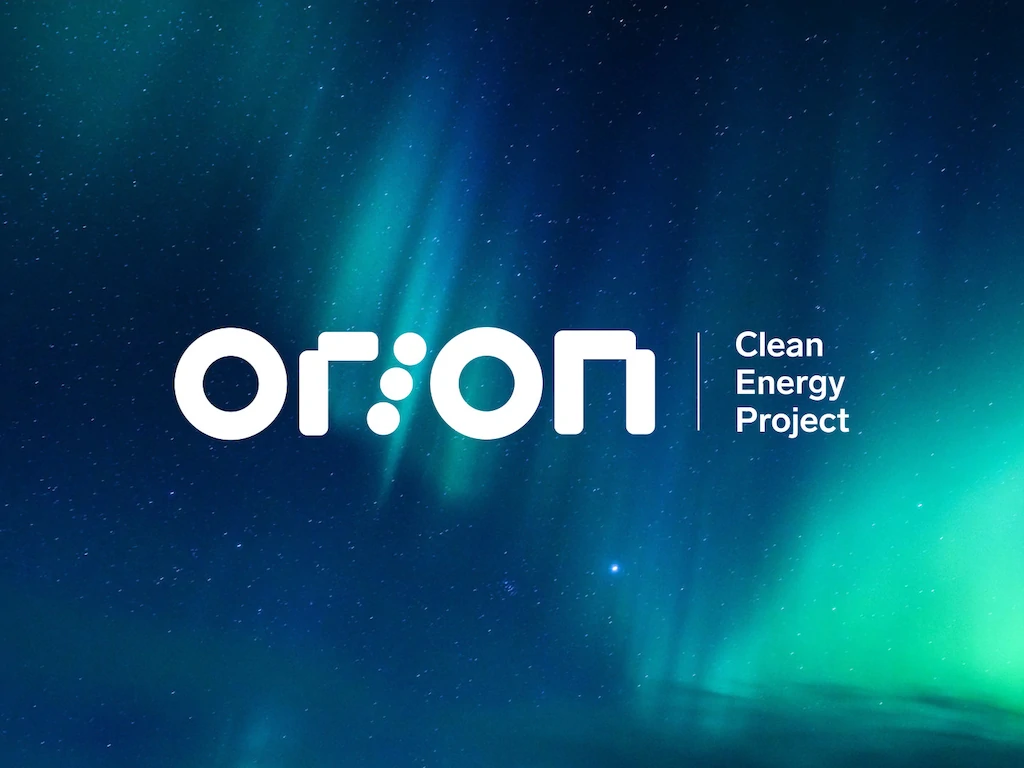There are a variety of ways to produce hydrogen which are mostly based upon the type of energy put into the process. ORION is considering blue and green hydrogen production options as they are cleaner processes, in line with net zero ambitions and utilise the resource available to Shetland.
Green Hydrogen
Shetland is well-placed to develop sites in preparation for producing green hydrogen.
Green hydrogen production involves electrolysis to split water into Hydrogen (H2) and Oxygen (O2). It is powered by renewable energy sources, with no CO2 by-product, making it the cleanest process for H2 production.
Clean energy from wind and tidal turbines is used to power desalination and electrolysis during the production of green hydrogen.
Electrolysis
Purified water is required for electrolysis as chloride in the seawater corrodes the electrodes, limiting the system’s lifespan.
The purified water is formed through reverse osmosis. Seawater is forced through a membrane at high pressure. The membrane allows water molecules to pass through but prevents any other chemicals dissolved in the water from passing through.
In the electrolyser, an electric current is used to split water into oxygen and hydrogen. The electrolyser consists of two electrodes in the pure water. When the power is turned on, one electrode becomes positive and the other becomes negative, attracting the different molecules in the water.
Hydrogen gas bubbles are produced at the negative end (cathode) and breathable oxygen emerges at the positive end (anode).
By-products from the process
The oxygen could be used as a resource to serve the aquaculture industry in Shetland. Heat generated from electrolysis may have the potential to be reused in a district heating scheme.
Blue Hydrogen
Sullom Voe is one of two regions in Scotland, along with St Fergus, that has the potential to produce and export blue hydrogen.
The opportunity requires both technical and commercial evaluationbut the existing facility and expertise associated with Sullom Voe Terminal could place Shetland in a strong position.
Blue hydrogen is created by splitting natural gas into hydrogen and carbon dioxide. Gas for the process could be sourced from current and future fields located in the the West of Shetland basin.
The separation process involves either auto thermal reforming (ATR) or steam methane reforming (SMR) of the gas.
Existing technology
Though there is ongoing innovation occurring in the energy sector, there are existing technologies around the world that could be deployed around Shetland for the production and use of hydrogen.
There is considerable knowledge in Shetland, provided by the Unst-based Pure Energy Centre, a manufacturer of small, medium and large-scale green hydrogen systems. Pure Energy also focuses on the development of renewable energy projects as well as green energy storage technologies.
Emerging technology
As the renewable energy sector expands, new options for hydrogen production, transportation and storage are emerging whether in the beginning stages of research or the completion of demonstration projects.
Orion is currently involved with a study examining Liquid Organic Hydrogen Carriers (LOHC) as a medium for the bulk scale transportation of hydrogen by ship. This includes evaluating environmental, health and safety performance for a number of LOHC options.
Energy Hubs could help with the development and deployment of other emerging technologies. That includes but is not limited to saltwater electrolysis, which could eliminate the requirement for desalination plants and allow deployment on repurposed offshore platforms, and integrated floating offshore wind turbines with electrolysis.
Shetland is well placed to be involved with further studies that will contribute to the major strides towards net zero that are required in decades to come.

